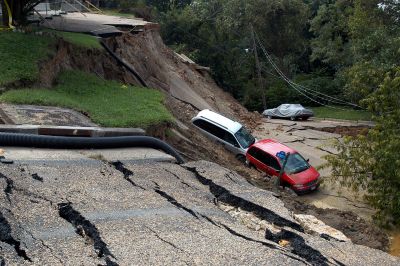The 'Landslide modelling and tools for vulnerability assessment preparedness and recovery management' (LAMPRE)
project continues to work to prevent such crises by creating and
instituting successful techniques for assessing landslide vulnerability,
mitigating risk/heightening preparedness, and improving post-landslide
recovery/response. These techniques include the use of satellite
imagery, innovative image processing techniques, advanced numerical
modelling, and ground based thematic and environmental information.
During the first period of this project, interviews and
questionnaires were conducted to establish realistic user needs. The
specific geo-databases for the multiple project test sites were designed
and populated and a general format adopted. New techniques for the
semi-automatic mapping of landslides have also been developed and
tested.
Landslide inventory maps were validated and the data has been
acquired for a deterministic model for the simulation of the behaviour
of a deep-seated landslide. In terms of prevention, statistical methods
of determining landslide susceptibility were reviewed and its software
developed. The validation criteria and procedures for such LAMPRE
techniques were also determined and some were used at various test
sites.
In regards to the dissemination of current and future project
results, the LAMPRE project website continues to be updated. Also, the
first workshop was organised for the Stakeholder User Group, a group of
representatives from the EU and external countries.
LAMPRE products and services aim to transcend political or
administrative boundaries and instead provide a method for cohesive
measures of prevention and response. Thus, a variety of test sites are
being used and a range of participants and feedback welcomed.
The desired end result of LAMPRE is a more refined and
technologically advanced approach to landslide prevention. This
hopefully will allows civil protection authorities, transportation
organisations, and agricultural and forestry agencies to better manage
expectations and mitigate risks or potential crises.
 EN
EN  CS
CS DE
DE ES
ES FR
FR HU
HU IT
IT PL
PL PT
PT РУ
РУ SK
SK TR
TR УК
УК AR
AR 中文
中文







